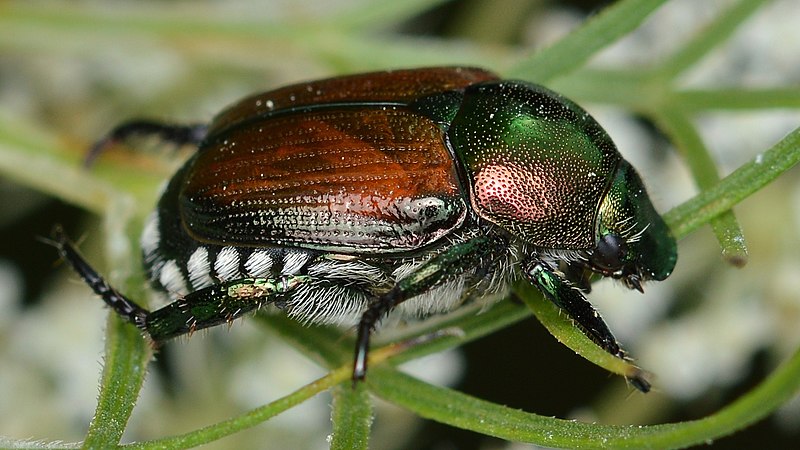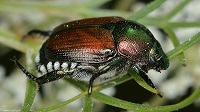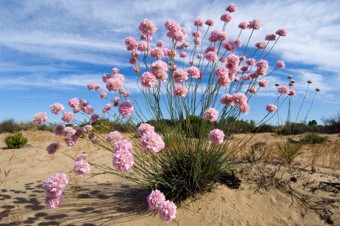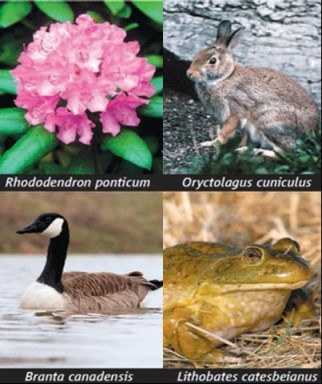Researchers from 31 Spanish research institutions, coordinated by the InvaNET network and coinciding with the publication of the IPBES report, have identified the 108 alien animal and plant species with the highest risk of having a strong environmental impact in Spain in the next 10 years.
Those include, for example, the Japanese beetle, the roundworm Radopholus similis, or the marine plant Halophila stipulacea. More than 80% of the species identified are not included in the Spanish Catalogue of Invasive Alien Species.
Coinciding with the publication of the international IPBES report on invasive alien species, 39 researchers from 31 Spanish scientific institutes coordinated by the InvaNET network, have identified the 108 non-established alien species with a high or very high risk of arriving, establishing, and causing major ecological impact in Spain within the next ten years. The results have been published in the scientific Journal of Environmental Management.
Overall, 933 species have been evaluated by applying a horizon scanning method. In this context, this methodology consists of obtaining a list of potential species, a simplified assessment of their risk, and the elaboration of a list ordered by consensus among the scientists involved in the scanning. As a result, this list of prioritized species for Spain consists of 108 species, of which 47 were identified with very high risk and 61 with high risk.
"We are underestimating the threat that invasive species pose to biodiversity. Generally, it is considered as a local rather than a global environmental problem", explains Montserrat Vilà, Professor of Research of the Spanish National Research Council (CSIC) at the Doñana Biological Station. Many of the species identified in the study have a long history of invasions across the world and they are already present in neighbouring countries. The Japanese beetle, native to northwest Asia but present in several European countries, is one of the species identified as very high risk. This species is capable of causing significant damage to meadows, forests, and agricultural plantations. Another example is the roundworm Radopholus similis, which feeds on roots and rhizomes destroying the absorption area. At present, this species is found in several European countries such as Belgium, France, Germany, Netherlands, and Italy. One more example to mention could be the marine plant Halophila stipulacea, native to the tropics, which entered the Mediterranean through the Suez Canal. Due to its wide environmental tolerance, it has managed to colonize the eastern and central Mediterranean coastline. It has so far reached Sicily.
However, a wide majority of the species identified in this study (84.3%) are not currently included in the Spanish Catalogue of Invasive Alien Species. For this reason, the researchers recommend carrying out a more detailed risk assessment of this species and, if the high risk of invasion is confirmed, they should be included in this catalogue or in the list of alien species likely to compete with native wild species, alter their genetic purity or ecological balances.
Biological invasions, a global threat
Professor Vilà of the Doñana Biological Station has also participated in the last report of the Intergovernmental Platform on Biodiversity and Ecosystem Services (IPBES), which was produced by 86 experts from 49 countries, drawing on more than 13,000 references, including very significant contributions from Indigenous Peoples and local communities.
The report emphasizes that invasive alien species pose major global threats to nature, economies, food security, and human health. In addition, the results show that they have a key role in 60% of global plant and animal extinctions and their annual costs are already over 423 billion dollars. The team also highlights that climate change along with the accelerating global economy, as well as intensified and expanded land- and sea-use change and demographic changes, will make the situation even worse, leading to increases and invasive alien species and amplifying their impacts.
"Most of the efforts are focused on eradication or control actions. There is a need to invest more in prevention and education", suggests Vilà, who received the Spanish National Research Award in 2021 thanks to her contributions to the ecology of invasive species. "The main aim we have in science on this issue is precisely to anticipate the future, to predict which alien species are most likely to enter a country, what genetic, morphological and functional characteristics the species with invasive potential have. And most importantly, it is important for identifying which native species and ecosystems are the most vulnerable to invasions".
Most pristine ecosystems are less vulnerable to invasions, so the less disturbance, the more resistant they are to invasions. For this reason, prevention is the best and most cost-effective option, according to the study. However, it also demonstrates that eradication, containment, and control are also effective in specific contexts.
According to the Professor, education and awareness are important in the fight against this global problem. Citizens can also contribute to its mitigation at an individual level. "As citizens, we can do small things to curb these impacts such as avoiding our pet going out, using ornamental native plants, or consuming fresh Km0 products instead of imported products", concludes Vilà.
About InvaNET
The "Thematic Network on Biological Invasions" (InvaNET) is a research network funded by the Ministry of Science and Innovation and the State Research Agency (ref. RED2018-102571-T).
More information on IPBES report
https://www.ipbes.net/IASmediarelease
Reference:
Cano-Barbacil C., Carrete M., Castro-Díez P., Delibes-Mateos M., Jaques J. A., López-Darias M., Nogales M., Pino J., Ros M., Traveset A., Turon X., Vilà M., Altamirano M., Álvarez I., Arias A., Boix D., Cabido C., Cacabelos E., Cobo F., Cruz J., Cuesta J. A., Dáder B., del Estal P., Gallardo B., Gómez Laporta M., González-Moreno P., Hernández J. C., Jiménez-Alfaro B., Lázaro Lobo A., Leza M., Montserrat M., Oliva-Paterna F. J., Piñeiro L., Ponce C., Pons P., Rotchés-Ribalta R., Roura-Pascual N., Sánchez M., Trillo A., Viñuela E. & García-Berthou E. 2023. Identification of potential invasive alien species in Spain through horizon scanning. Journal of Environmental Management 345: 118696. https://doi.org/10.1016/j.jenvman.2023.118696 (acceso abierto)
Contact:
outreach@ebd.csic.es
https://doi.org/10.1016/j.jenvman.2023.118696



 Identifican las especies exóticas con más riesgo de invadir los ecosistemas españoles
Identifican las especies exóticas con más riesgo de invadir los ecosistemas españoles


